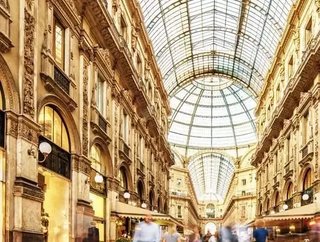Why clienteling is no longer a luxury

Advancements in digital commerce have taken the idea of personalized customer experiences and expanded it well beyond the domain of luxury brands. This is especially true online where tailored product recommendations, promotional emails, retargeted ads and location-based mobile notifications are the norm. But in the typical brick-and-mortar store— the place where personalised selling began—digital personalization has yet to expand beyond high-touch, luxury retailers.
That’s now changing.
What is clienteling?
Clienteling solutions improve in-store personalization by making a broad array of customer information and customer-focused capabilities available to the store associate. Clienteling benefits from interoperability with an enterprise order management system to provide real-time access to customer transactions, network inventory and full lifecycle fulfilment. Retailers with high-service experiences are headed toward associate enablement vs. self-service; Thus the interest in assisted selling and clienteling.
- MYTH ONE - “It’s too expensive to implement.”
The popularization of mPOS solutions has opened the door to arming store associates in a wider variety of retail categories with affordable mobile devices. A few years ago, clienteling solutions were often sold as standalone modules that required separate software procurement processes, separate integration and separate hardware. That has now changed. A recent survey found that 69 percent of all retailers plan to invest in mPOS technologies by 2018. Meanwhile, a handful of mPOS vendors now offer solutions that are fully integrated with clienteling and order management systems. Therefore, the cost of implementing mPOS is now likely not that different from the cost of implementing mPOS and clienteling together.
- MYTH TWO - “Customers don’t want it.”
Early clienteling technology was defined by purpose-built applications for the needs of luxury retail customers who make high-value purchases and have high service demands. As a result, technology-driven clienteling experiences were only exposed to a limited subset of consumers. Because digital commerce has now normalised the idea of personalized shopping among consumers, non-luxury stores are increasingly seen as lagging behind shopper expectations with regard to service and convenience.
Today, consumers expect associates to know their past purchases and preferences, they expect recommendations based on their purchase/browsing history and therefore expectequipped store associates to be able to engage, inform and transact with the customer anywhere on the store floor. In sight of this, consumers are then more likely to recommend or pay more for a brand that provides a personalised service or experience.
- MYTH THREE - “Personalization doesn’t fit our brand.”
Because one digital personalization is the product of automation and sophisticated algorithms, the idea of bringing clienteling capabilities to your stores may seem unintuitive and inconsistent with your brand at first blush. However, recent advancements in clienteling technology now allow for select capabilities to be adopted by a greater variety of retail categories. By taking a closer look at what subset of clienteling capabilities make the most sense for a brand, nearly any retailer can leverage the technology to drive larger purchases, higher customer retention and more frequent visits. Further, clienteling capabilities offer a more consistent experience with what nearly any retailer’s e-commerce site already offers.
Henri Seroux, SVP EMEA at Manhattan Associates






